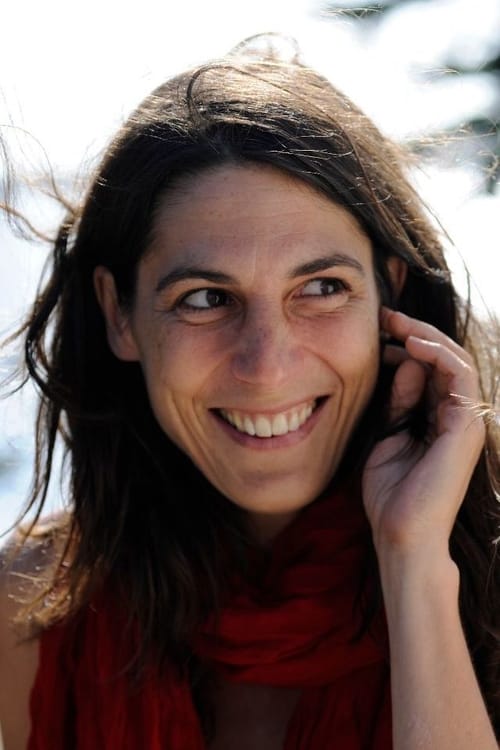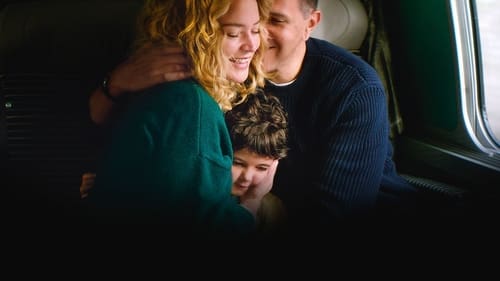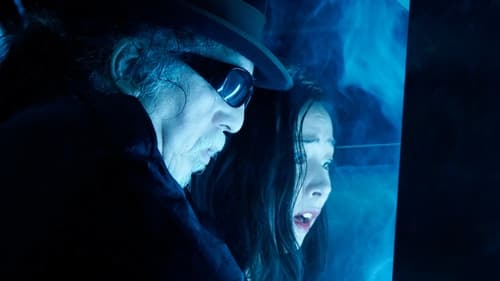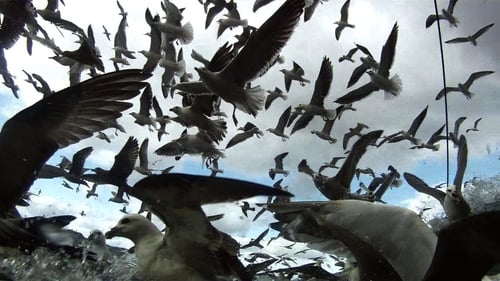
Véréna Paravel
出生 : 1971-04-21, Neuchâtel, Switzerland
略歴
Véréna Paravel (born 21 April 1971 in Neuchâtel, Switzerland) is a French anthropologist and artist who works in film, video, and photography.
Paravel was born in Neuchâtel, Switzerland, to French parents, and grew up in Algeria, Portugal, Togo, Côte d'Ivoire, the Soviet Union, and France. She taught at the Université de Toulouse, and received her PhD in Anthropology and Communication Sciences from the Université de Toulouse II. She later worked with Bruno Latour at the École Nationale Supérieure des Mines de Paris. In 2004, she moved to the United States, where she had a postdoctoral fellowship at Columbia University.
Since 2006, Verena Paravel has worked with Lucien Castaing-Taylor at the Sensory Ethnography Lab at Harvard University. She has been a Lecturer in the Department of Anthropology at Harvard University, and in 2012-13 she was the Frieda L. Miller Fellow in Film, Video, Sound, and New Media at the Film Study Center and the Radcliffe Institute for Advanced Study. She is also on the master class faculty at the Ecole des Arts Politiques at Sciences Po in Paris. In 2013, she and Castaing-Taylor jointly received the True Vision Award from the True/False Film Festival. Her works in film and video have screened at Berlin, Locarno, New York, Toronto, and other film festivals. They include 7 Queens (2008), Interface Series (2008-10), Foreign Parts (2010), and Leviathan (with Castaing-Taylor, 2012).

Sound
Five centuries ago, anatomist André Vésale opened up the human body to science for the first time in history. Today, De Humani Corporis Fabrica opens the human body to the cinema. It reveals that human flesh is an extraordinary landscape that exists only through the gaze and attention of others. As places of care, suffering and hope, hospitals are laboratories that connect every body in the world.

Editor
Five centuries ago, anatomist André Vésale opened up the human body to science for the first time in history. Today, De Humani Corporis Fabrica opens the human body to the cinema. It reveals that human flesh is an extraordinary landscape that exists only through the gaze and attention of others. As places of care, suffering and hope, hospitals are laboratories that connect every body in the world.

Director of Photography
Five centuries ago, anatomist André Vésale opened up the human body to science for the first time in history. Today, De Humani Corporis Fabrica opens the human body to the cinema. It reveals that human flesh is an extraordinary landscape that exists only through the gaze and attention of others. As places of care, suffering and hope, hospitals are laboratories that connect every body in the world.

Camera Operator
Five centuries ago, anatomist André Vésale opened up the human body to science for the first time in history. Today, De Humani Corporis Fabrica opens the human body to the cinema. It reveals that human flesh is an extraordinary landscape that exists only through the gaze and attention of others. As places of care, suffering and hope, hospitals are laboratories that connect every body in the world.

Producer
Five centuries ago, anatomist André Vésale opened up the human body to science for the first time in history. Today, De Humani Corporis Fabrica opens the human body to the cinema. It reveals that human flesh is an extraordinary landscape that exists only through the gaze and attention of others. As places of care, suffering and hope, hospitals are laboratories that connect every body in the world.

Director
Five centuries ago, anatomist André Vésale opened up the human body to science for the first time in history. Today, De Humani Corporis Fabrica opens the human body to the cinema. It reveals that human flesh is an extraordinary landscape that exists only through the gaze and attention of others. As places of care, suffering and hope, hospitals are laboratories that connect every body in the world.

Miriama
Rachel loves her life, her students, her friends, her ex, her guitar lessons. When she falls in love with Ali, she grows close to his 4-year-old daughter, Leila. She tucks her in, looks after her, and loves her like a mother... which she isn’t. Not yet. Rachel is 40. The desire for a family of her own is growing stronger, and the clock is ticking. Is it too late?

Director of Photography
Caniba is a fresco about flesh and desire. It reflects on the discomfiting significance of cannibalism in human existence through the prism of one Japanese man, Issei Sagawa, and his mysterious relationship with his brother, Jun Sagawa.

Producer
Caniba is a fresco about flesh and desire. It reflects on the discomfiting significance of cannibalism in human existence through the prism of one Japanese man, Issei Sagawa, and his mysterious relationship with his brother, Jun Sagawa.

Editor
Caniba is a fresco about flesh and desire. It reflects on the discomfiting significance of cannibalism in human existence through the prism of one Japanese man, Issei Sagawa, and his mysterious relationship with his brother, Jun Sagawa.

Sound
Caniba is a fresco about flesh and desire. It reflects on the discomfiting significance of cannibalism in human existence through the prism of one Japanese man, Issei Sagawa, and his mysterious relationship with his brother, Jun Sagawa.

Director
Caniba is a fresco about flesh and desire. It reflects on the discomfiting significance of cannibalism in human existence through the prism of one Japanese man, Issei Sagawa, and his mysterious relationship with his brother, Jun Sagawa.

Director
A two-channel installation utilizing both digital video and 16mm film, Commensal focuses on the controversial figure of Issei Sagawa, who gained notoriety in 1981 when, as a graduate student in Paris, he murdered a fellow student and engaged in acts of cannibalism. After his release from a mental institution, Sagawa returned to Japan, and later appeared in innumerable documentaries and sexploitation films. In contrast to earlier journalistic documentaries on Sagawa, the film suspends moral judgment and explores a realm that eludes classification as either “documentary” or “pure fiction,” to instead chart the ambiguous territory between crime, fantasy, and social realities, between an individual and the economy of his public persona.

Editor
Works with sound recordings of Dion McGregor, who became famous for talking in his sleep.

Cinematography
Works with sound recordings of Dion McGregor, who became famous for talking in his sleep.

Producer
Works with sound recordings of Dion McGregor, who became famous for talking in his sleep.

Director
Works with sound recordings of Dion McGregor, who became famous for talking in his sleep.

Producer
“生き別れた眼球”を捜している麻耶は、カメラを手に魔都TOKYOを当てもなく歩いていた。そんな麻耶のドキュメンタリー映画を作ろうと彼女の姿を記録する脳神経外科医の佐多と、麻耶の眼球を狙う黒ずくめの眼球コレクターだった。

Director
“Ah humanity! reflects on the fragility and folly of humanity in the age of the Anthropocene. Taking the 3/11/11 disaster of Fukushima as its point of departure, it evokes an apocalyptic vision of modernity, and our predilection for historical amnesia and futuristic flights of fancy. Shot on a telephone through a handheld telescope, at once close to and far from its subject, the audio composition combines excerpts from Japanese genbaku film soundtracks, audio recordings from scientific seismic laboratories, and location sound.”—Ernst Karel, Verena Paravel & Lucien Castaing-Taylor

Director
A short companion to Leviathan, set inside the fishing vessel.

Producer
A documentary about a group of pilgrims who travel to Nepal to worship at the legendary Manakamana temple.

Editor
Set aboard a hulking fishing vessel as it navigates the treacherous waves off the New England coast. The very waters that once inspired Moby Dick, the film captures the harsh, unforgiving world of the fishermen in starkly haunting, yet beautiful detail.

Director of Photography
Set aboard a hulking fishing vessel as it navigates the treacherous waves off the New England coast. The very waters that once inspired Moby Dick, the film captures the harsh, unforgiving world of the fishermen in starkly haunting, yet beautiful detail.

Producer
Set aboard a hulking fishing vessel as it navigates the treacherous waves off the New England coast. The very waters that once inspired Moby Dick, the film captures the harsh, unforgiving world of the fishermen in starkly haunting, yet beautiful detail.

Writer
Set aboard a hulking fishing vessel as it navigates the treacherous waves off the New England coast. The very waters that once inspired Moby Dick, the film captures the harsh, unforgiving world of the fishermen in starkly haunting, yet beautiful detail.

Director
Set aboard a hulking fishing vessel as it navigates the treacherous waves off the New England coast. The very waters that once inspired Moby Dick, the film captures the harsh, unforgiving world of the fishermen in starkly haunting, yet beautiful detail.

Director
A portrayal of a hidden enclave of auto shops and junkyards fated for demolition in the shadow of a new baseball stadium in Queens. The film observes this vibrant community of immigrants – where wrecks, refuse, and recycling form a thriving commerce – as it struggles for daily survival and contests New York City's development scheme.

Director
Ephemeral encounters recorded during a walk beneath the elevated tracks of the No. 7 subway line in New York City.







